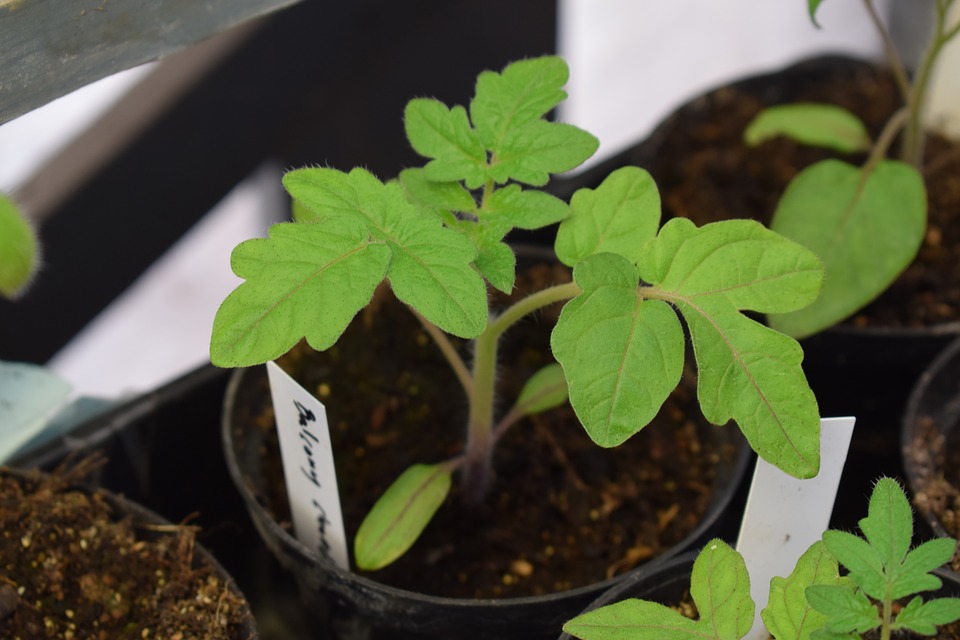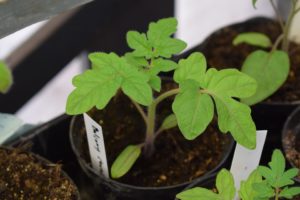Be-a-Better-Gardener
April 2018,
Spring Shopping
Get a jump start on the season by purchasing vigorous, healthy seedlings that will yield great results.
By Thomas Christopher
Myself, I prefer to raise my vegetable and flower plants from seed, rather than purchasing seedlings ready to transplant at the garden center. But I understand the appeal. Buying the plants all ready to go does save time, which is a precious and rare commodity for most of us. Besides, this approach relieves the gardener of the necessity to plan his or her plot so far in advance. Instead, you just wander through the greenhouses, picking up what looks good. That, of course, is the problem: what looks good to your eye isn’t necessarily the healthiest, best plants for your garden. Indeed, shopping for transplants is a skill.
The first rule is to resist the seduction of the big. That seedling which towers above the rest is most likely not the best deal. Quite likely it has outgrown its container so that its root-ball isn’t adequate to support the over-sized stem and foliage. That means it probably won’t react well to transplanting into the garden, and although it’s the biggest plant now, it soon won’t be, as its smaller fellows make a better transition to life outdoors and grow more vigorously.
Look for compact, stocky seedlings whose top growth is proportionate to the size of their container.
Because color sells, most of the flower transplants you’ll find at retail garden centers are already in bloom. That’s not a good thing – ideally, you should move them out into the garden before this point. In any event, avoid transplants that are blooming heavily, and be sure to pinch back the tops of the ones you do buy at planting time. You want the transplant to concentrate on stem and leaf growth initially, and to move on to flowering only after they have achieved some stature. For similar reasons, try to get vegetable transplants that are not yet in flower.
Check the roots before you buy. There should be no roots coming out of the bottom of a plant’s container. Slip the plant out of its container – the roots should be crisp and white, not brown and they should be just emerging from the potting mix, not curling around it like a ball of yarn.
Make sure there are no hitchhikers. That is, scrutinize the leaves and stems of the seedlings carefully to make sure there are no insect pests or insect eggs hiding there. Discolored flecks on the leaves are often a sign of insect infestation; that or yellowing leaves could also be a symptom of a plant disease. In either case, you don’t want to bring the problem home with you. I still remember the plant I got cheaply at a local bargain nursery. I didn’t look closely enough to notice the white flies lurking in it and within days they had spread throughout my garden. I battled them all summer. Since then, I only go to nurseries that I know are careful about keeping their plants pest-free.
Obviously, you don’t want transplants that are flagging from thirst. Watering them may appear to revive them, but the temporary drought is likely to have damaged the plants’ roots. A brown edging to the leaves is another clue that plant has suffered from erratic irrigation.
Another point to consider when shopping for vegetable transplants is whether you want to buy heirloom varieties or the most recent hybrids. The old timers may well offer superior flavor, but the new types may have useful qualities like better disease resistance or compact size.
You are more likely to find good quality plants early in the spring shopping season, before the garden centers’ stock has been picked over. A great resource of spring seedlings and a wide variety of other plants is Berkshire Botanical Garden’s annual Plant Sale. This is so much more than a buying opportunity, as staff and seasoned volunteers are on hand to offer sage advice on choosing, planting and maintaining your purchases. Expect the very best selection and quality at this event, held on Mother’s Day weekend, May 11-12.
Thomas Christopher is the co-author of “Garden Revolution” (Timber Press, 2016) and is a volunteer at Berkshire Botanical Garden. berkshirebotanical.org
Be-a-Better-Gardener is a community service of Berkshire Botanical Garden, one of the nation’s oldest botanical gardens in Stockbridge, MA. Its mission to provide knowledge of gardening and the environment through 25 display gardens and a diverse range of classes informs and inspires thousands of students and visitors on horticultural topics every year. Thomas Christopher is the co-author of Garden Revolution (Timber press, 2016) and is a volunteer at Berkshire Botanical Garden. berkshirebotanical.org.
Caption:




